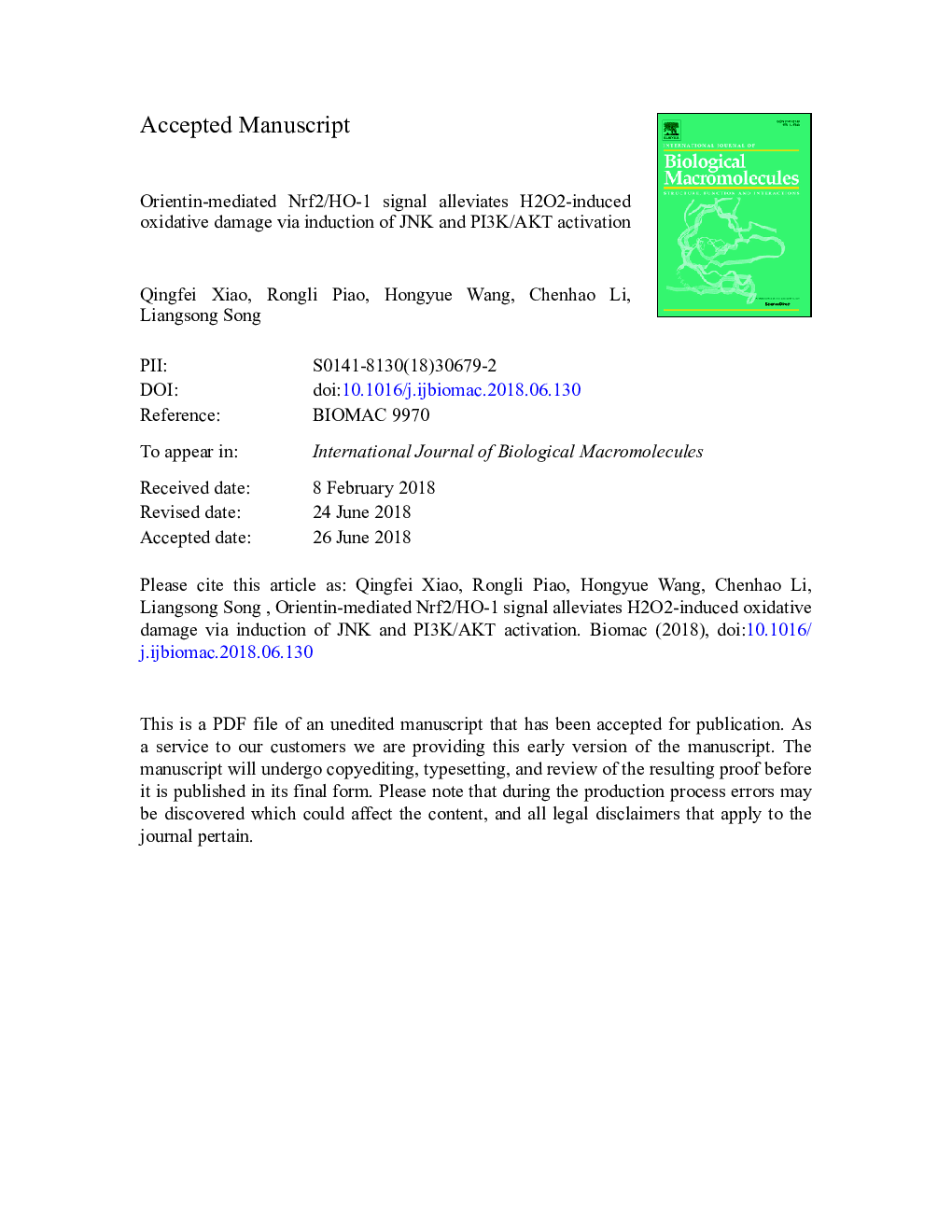| Article ID | Journal | Published Year | Pages | File Type |
|---|---|---|---|---|
| 8326908 | International Journal of Biological Macromolecules | 2018 | 31 Pages |
Abstract
Oxidative stress is closely associated with the pathogenesis of various diseases. Orientin (Ori), a flavonoid component isolated from natural plants, possesses antioxidant activity. Accordingly, we focused on exploring the potential therapeutic effects of Ori on hydrogen peroxide (H2O2)-induced oxidative impairment in RAW 264.7 cells and the underlying antioxidative mechanisms. Our findings suggested that Ori exposure effectively alleviated H2O2-stimulated cytotoxicity, inhibited reactive oxygen species (ROS) generation, and glutathione (GSH) depletion, which were involved in induction of heme oxygenase-1 (HO-1) by enhancing the nuclear factor-erythroid 2-related factor 2 (Nrf2) translocation, decreasing the Keap1 protein expression, and increasing the antioxidant response element (ARE) activity. However, knockdown of Nrf2 and HO-1 with siRNA mostly abolished the cytoprotective effects against H2O2-induced cell oxidative injury, reduced the expression of Nrf2 and HO-1, respectively. Moreover, Ori exposure significantly induced a c-Jun NH2-terminal kinase (JNK) and phosphatidylinositol 3-kinase (PI3K)/serine/threonine kinase (AKT) phosphorylation, but JNK and PI3K/AKT inhibitors treatment effectively reduced levels of Ori-enhanced Nrf2 nuclear translocation and HO-1 protein expression, and blocked Ori-inhibited cytotoxicity and ROS accumulation triggered by H2O2 respectively. Taken together, Ori might exhibit a protective role against H2O2-stimulated oxidative damage by the induction of HO-1 expression through the activation of the JNK- and PI3K/AKT-Nrf2 signaling pathways.
Related Topics
Life Sciences
Biochemistry, Genetics and Molecular Biology
Biochemistry
Authors
Qingfei Xiao, Rongli Piao, Hongyue Wang, Chenhao Li, Liangsong Song,
